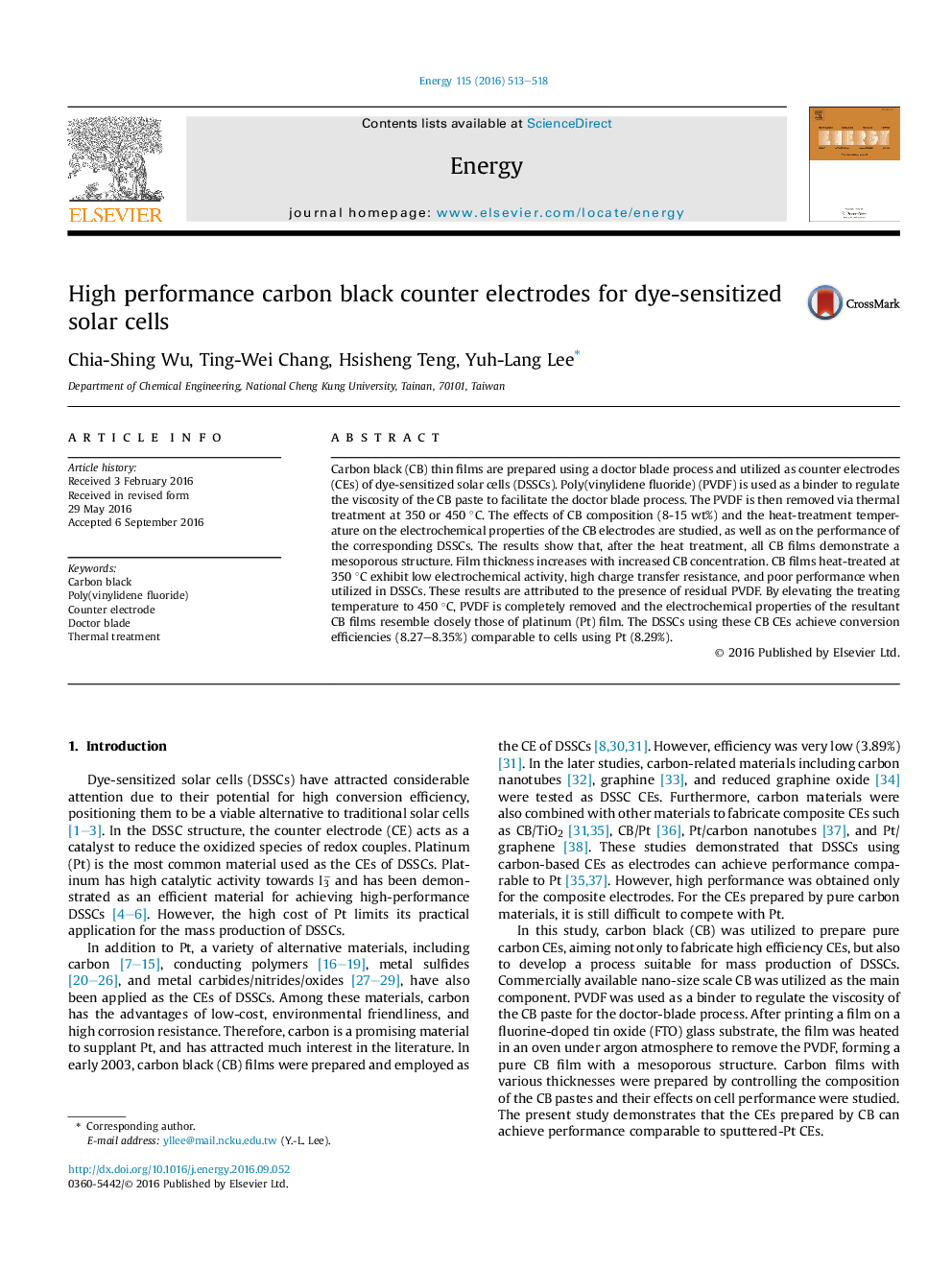| Article ID | Journal | Published Year | Pages | File Type |
|---|---|---|---|---|
| 5476692 | Energy | 2016 | 6 Pages |
Abstract
Carbon black (CB) thin films are prepared using a doctor blade process and utilized as counter electrodes (CEs) of dye-sensitized solar cells (DSSCs). Poly(vinylidene fluoride) (PVDF) is used as a binder to regulate the viscosity of the CB paste to facilitate the doctor blade process. The PVDF is then removed via thermal treatment at 350 or 450 °C. The effects of CB composition (8-15 wt%) and the heat-treatment temperature on the electrochemical properties of the CB electrodes are studied, as well as on the performance of the corresponding DSSCs. The results show that, after the heat treatment, all CB films demonstrate a mesoporous structure. Film thickness increases with increased CB concentration. CB films heat-treated at 350 °C exhibit low electrochemical activity, high charge transfer resistance, and poor performance when utilized in DSSCs. These results are attributed to the presence of residual PVDF. By elevating the treating temperature to 450 °C, PVDF is completely removed and the electrochemical properties of the resultant CB films resemble closely those of platinum (Pt) film. The DSSCs using these CB CEs achieve conversion efficiencies (8.27-8.35%) comparable to cells using Pt (8.29%).
Related Topics
Physical Sciences and Engineering
Energy
Energy (General)
Authors
Chia-Shing Wu, Ting-Wei Chang, Hsisheng Teng, Yuh-Lang Lee,
